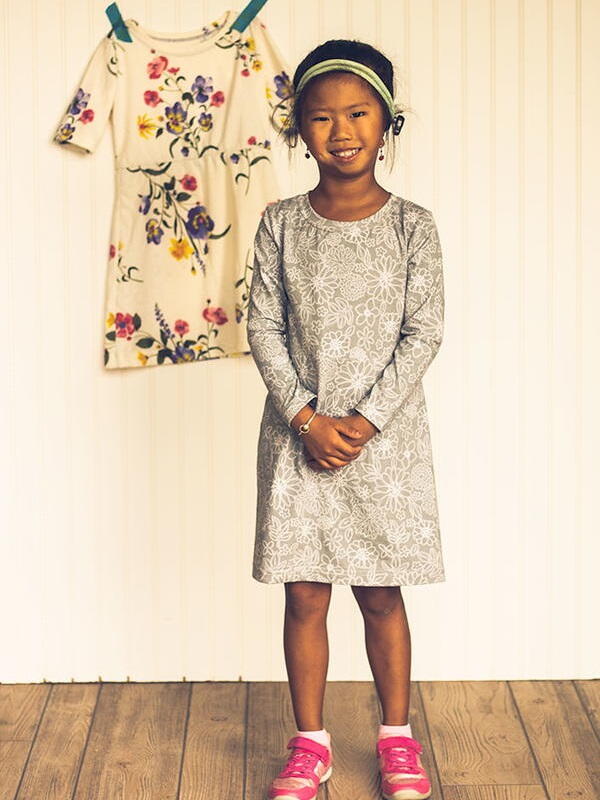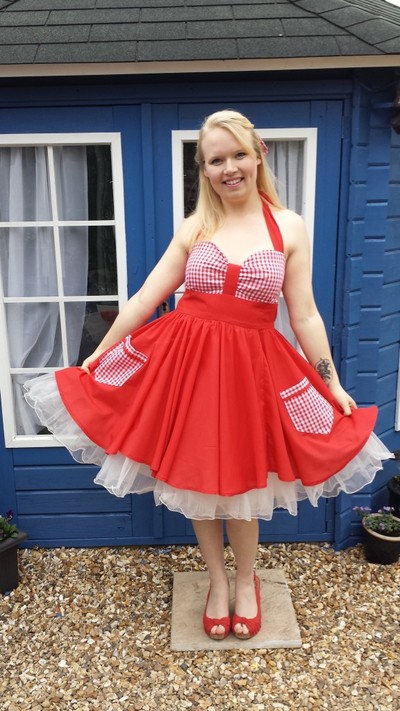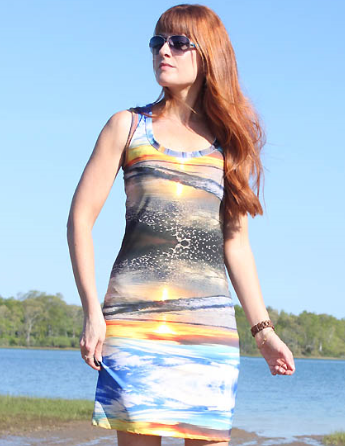What are the Different Types of Dresses?
With our types of dresses guide, you can put the name with the cut and know your dresses for sewing or shopping!
If you sew clothing (or simply like shopping and fashion), knowing the names and features of the basic dress shapes is extremely helpful. With this guide, What Are the Different Types of Dresses?, learn everything you need to know about dresses.
This will make finding and sewing patterns easier, inspire creativity, and make choosing fabrics simpler. But there are so many terms and subtle differences between dresses that it can be overwhelming.
Here is a general list of the various kinds of dresses, organized in alphabetical order so it's easy to browse!
You will probably recognize most of these but you may not know the name or style nuances. That's why we are not only providing the names of dresses but also with pictures so that you can put a name to the cut.
We are continuously adding more dress types as well, such as the simple sheath dress, little cocktail styles, and the (literally) classic tunic. Knowing the different kinds of dresses will help with many aspects of sewing and pattern-making. Here are five additional types of dresses that you may consider for your next sewing project!
As a bonus, scroll down to download our illustrated Dress Styles and Necklines infographic that you can download and use for your next dress sewing project.
Interested in more helpful information and inspiration? Sign up for our free newsletter!
FIRST! Helpful Resources:
- Is Making Your Own Clothes at Home Really Cheaper?
- What Size Am I? & Other Sizing Woes Solved
- Quick Fashion Tips: How to Dress for Your Body Type
- How to Get Started Sewing Clothes: A Beginner's Guide
- How to Make a Dress Without a Pattern
- How to Make a Sewing Pattern From Scratch
A-Line Dresses
This classic style is characterized by a skirt that extends outwards into a flared “A” shape from the waist to the bottom hem. Lengths vary, so the A-line can be worn in both formal and casual settings.
Likewise, it can be sewn from high-end fabrics or crafted from everyday materials depending on the occasion.
Known as a universally flattering shape, the A-line dress creates a subtly cinched waist. For this reason, it has been and will remain popular throughout time.
A-Line Dress Sewing Patterns:
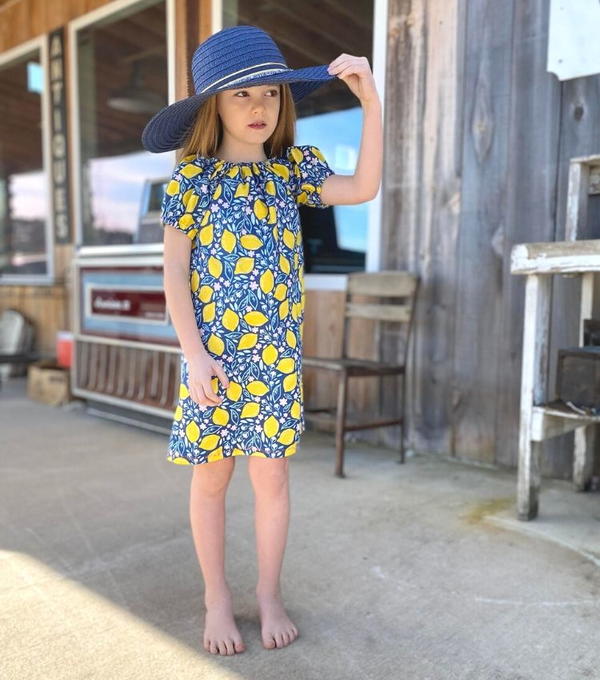
Cocktail Dresses
The first style we will discuss is the cocktail dress. This is a semi-formal dress that typically ends just above or at the knee.
A cocktail "number" (as they are sometimes called) is usually worn in the early evening, often for "cocktail hours" or mixer events. They don’t usually have sleeves, so a wrap or stole would be worn around the shoulders.
Cocktail frocks are a great chance to use embellished, decorated, and couture fabrics and adornments.
Cocktail Dress Sewing Patterns:

Drop-Waist Dresses
A drop-waist dress is just what it sounds like: a garment with a much lower waistline than most dresses. The waist of this style is down near the hips instead of at the natural waistline.
Lengths vary from above the knee to long to high-low designs. One popular example is the “flapper dress” of the 1920s.
The drop-waist is a common costume dress style and many sewing patterns are available in stores and online. It’s a versatile dress that can be made from a plain material or from a heavily-embellished fabric.
Drop Waist Dress Sewing Patterns:

Empire-Waist Dresses
A favorite of costume designers and often seen in historical dramas with romantic themes, the empire-waist dress is quite recognizable.
It consists of a high waistline that sits just below the fitted bust (or “bodice”) area instead of at the natural waist.
The remaining fabric flows down from the bustline and is not very form-fitting. Empire-waist dresses look especially beautiful when made from layers of sheer fabrics.
Empire Waist Dress Sewing Patterns:

Fit and Flare Dresses
Another classic look is the fit and flare dress. Like the name implies, it is fitted through the bodice, then the skirt section flares out.
The fuller skirt silhouette makes the fit and flare a perfect choice for a variety of body types. Most fit and flares stop just above the knee. Some are sleeveless, while others have sleeves.
It’s a comfortable kind of dress to wear while still offering a semi-formal vibe, and thus will always be in style.
Fit and Flare Dress Sewing Patterns:
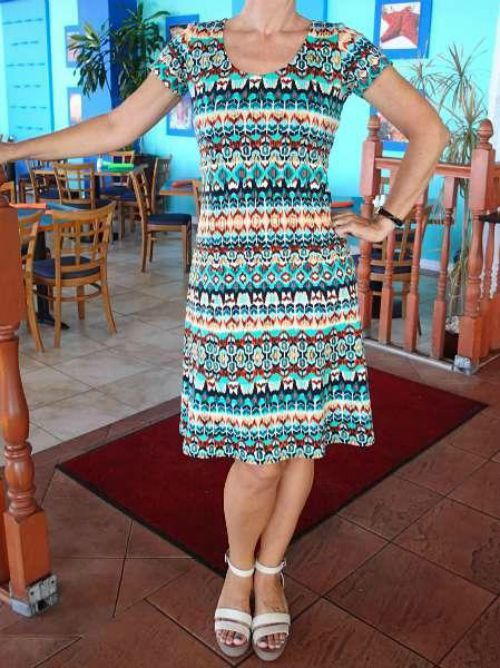
Sheath Dresses
A sheath dress is a more form-fitting kind than others. This style creates an hourglass effect for the wearer, due to the skirt and bodice being separate pieces that are then joined together.
The ability of fashion design and pattern-making to visually bring a waistline “inwards” is very evident in this style. Like a cocktail dress, a sheath dress typically stops just above the knee (though some designs fall to just below the knee).
This flattering garment is relatively easy to sew and can be made from a variety of fabrics- from linen blends to wool boucle.
Sheath Dress Sewing Patterns:

Shift Dresses
Made popular in the 1960s, the shift dress is another classic design that remains in style. It is a shorter kind of garment, stopping above the knee (which is why it's sometimes called a "minidress").
A shift dress does not flare out much from the neckline to the bottom hem. Instead, it has a very gradual look, with darts added at the bustline to give a bit of shape.
The lower portion is not form-fitting, but also not very voluminous. They typically have a zipper closure in the back. They can also be made from a variety of fabrics.
Shift Dress Sewing Patterns:

Sundresses
A favorite for summer days, sundresses tend to be more fitted at the top / bust and then loose and flowing at the bottom.
Some have sleeves, while others are sleeveless. They usually reach the floor or stop just at the ankle, depending on the wearer’s height.
Sundresses are a great way to use cotton or linen-blend materials you have in your fabric stash. They can also be adorned with ribbons and ties along the sleeves and other areas to add details and a custom fit.
Sundress Sewing Patterns:

T-Shirt Dresses
As the name suggests, a t-shirt dress is an extended version of the popular top. The proportions of the upper half are usually the same as on a regular t-shirt, while the torso is lengthened so that it stops at or above the knee.
Typically it’s a more casual option, although sometimes t-shirt dresses can be made high-fashion with the addition of embellishments or the use of fancy materials.
They are a great dress shape to start with when learning to sew your own clothes! Most don’t use zippers, buttons, or pleats, which makes it easy to construct.
T-Shirt Dress Sewing Patterns:

Tunic Dresses
This dress style was worn in many cultures throughout history, and then popularized in black-and-white movies about ancient Greece and Rome.
A classic silhouette that was once worn by both men and women, today the tunic is a popular womenswear item. The modern tunic has sleeves, often features a low V-shaped collar, and stops around the knees (or sometimes higher).
The pattern for a tunic dress is usually very straightforward, and versions can be simple or dressy depending on the materials used.
Tunic Dress Sewing Patterns:

Wedding Dresses
Traditional wedding dresses are quite full in shape, use expensive materials, and are often white or cream in color.
While any dress can technically be a wedding dress, the idea that first pops into our head when thinking about one is a large gown. They will often have an intricate, fitted bodice and an exaggerated bottom portion.
Many wedding dresses are made with a long ball gown skirt, though some are tea-length (ending below the knee and showing the ankles) or even mini.
Wedding Dress Sewing Patterns via AllFreeDIYWeddings:
- Ombre Blush DIY Wedding Dress
- Stunning DIY Convertible Wedding Dress
- Devastatingly Gorgeous Hand-Painted DIY Wedding Dress
- Vintage Flapper Wedding Dress

Wrap Dresses
The knee-length wrap dress was popularized by fashion designer Diane von Furstenberg in the 1970s.
It is characterized by a V-shaped neckline formed by one side wrapping over the other at the bust. An attached string wraps and ties around the waist to hold the dress together.
There have since been many versions of this dress shape, but the concept remains the same. Wrap dresses are usually made from cotton jerseys or polyester-blend fabrics.
Wrap Dress Sewing Patterns:

BONUS! Dress Styles and Necklines PDF Guide
For your convenience, we've put together a downloadable PDF with the most popular and common necklines for dresses along with the five most common names of dresses with pictures.
There is no need to memorize when you have them all right here. Plus, you can easily spot the differences when they are all on one sheet.

Want More?
Know Your Skirts Guide >>
When it comes to understanding "what are the different types of dresses?", what is your favorite type of dress we've shared?
Let us know in the comments below!
Your Recently Viewed Projects
KLC
Nov 15, 2022
I honestly haven't really thought about dress styles before but this is helpful. Now I know what to look for when looking at dress options.
tinaburrows56 8250 530
May 12, 2022
Hi as a larger busted lady who does not like to show off her bust I think it would have to be A-Line Dresses or Fit and Flare Dresses. It would be great to have some patterns for larger sized ladies as we do like to look nice also. This was a very handy post Thank - You
Report Inappropriate Comment
Are you sure you would like to report this comment? It will be flagged for our moderators to take action.
Thank you for taking the time to improve the content on our site.




